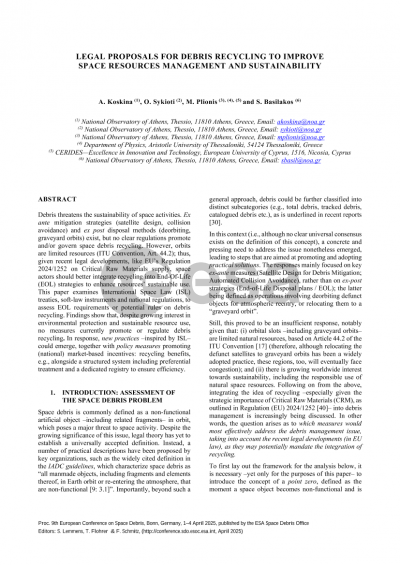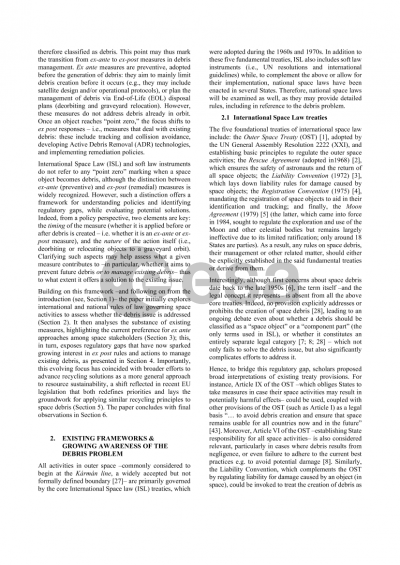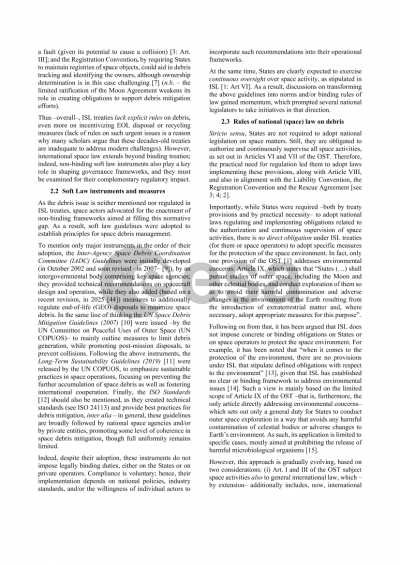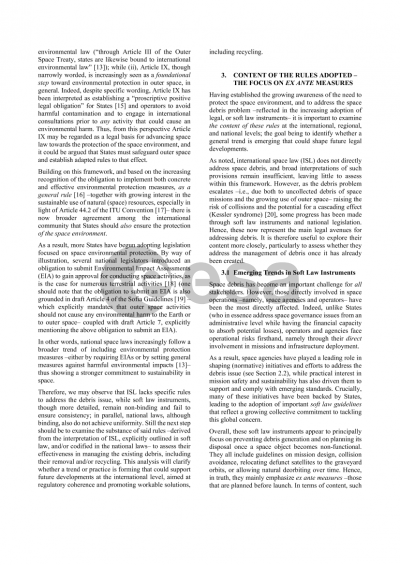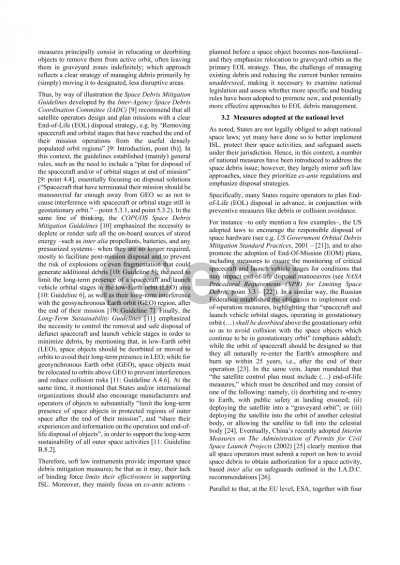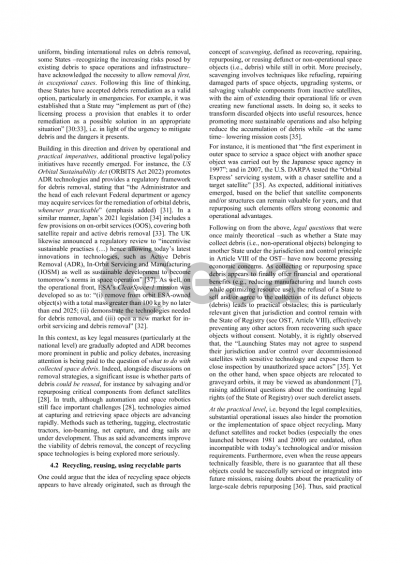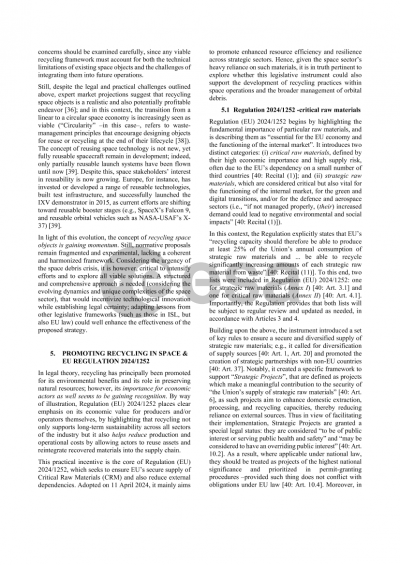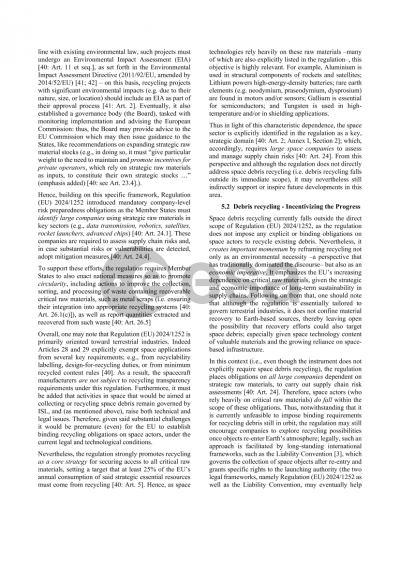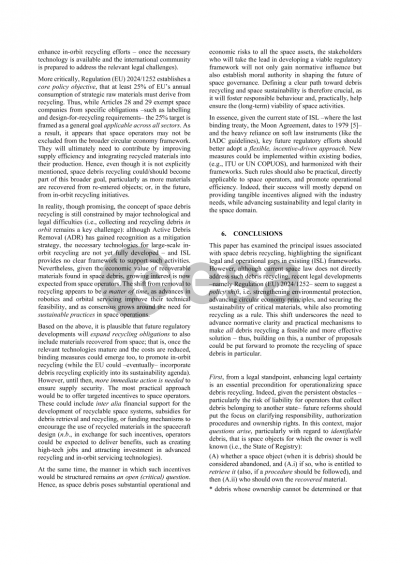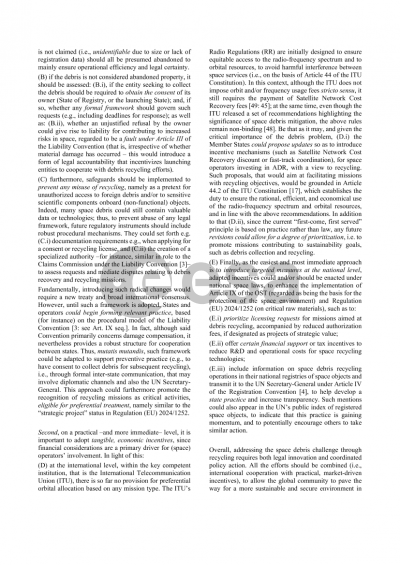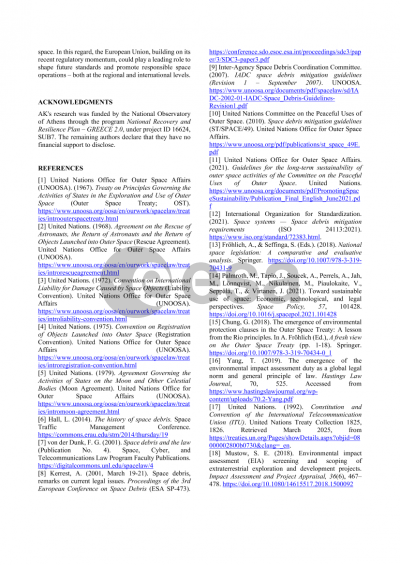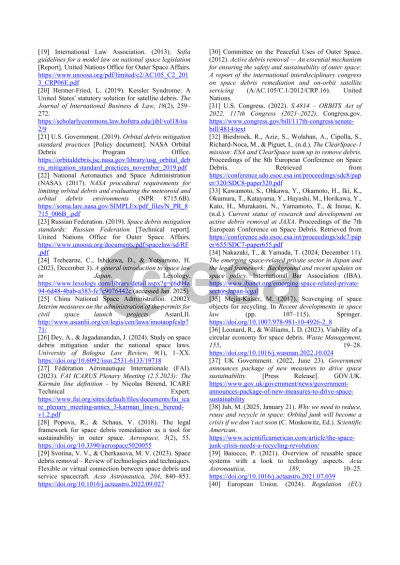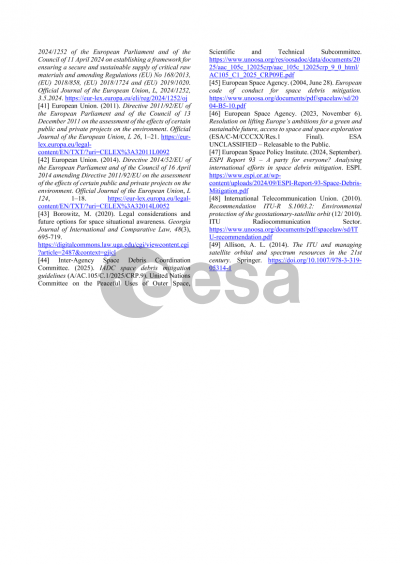Document details

Abstract
[Introduction] Space debris are non-functional artificial objects and fragments in orbit which pose a growing threat to space activities. In response, besides developing ex ante measures (Satellite Design for Debris Mitigation, Automated Collision Avoidance), actors are encouraged to adopt ex post strategies, like End-of-Life Disposal plans (decommissioned objects deorbited in the LEO for atmospheric reentry; or relocated to a 'graveyard orbit'—a few hundred kilometers above the GEO at approximately 36,000 kilometers above Earth’s equator). Yet, given the constant proliferation of debris, the time has come to intensify focus and efforts on addressing the management of said objects. Indeed, (i) orbits are limited natural resources (ITU Convention, Art. 44.2) and will at some point be congested, while (ii) there is a growing commitment to advancing the sustainable use of natural resources. Therefore, it is necessary to bring the issue of recycling into play (especially for Critical Raw Material /CRM) in the context of space debris management, to align with Regulation (EU) 2024/1252. Following this, the question arises of which measures would promote better end-of-life management for space debris.
[Methods] This analysis examines relevant international treaties (OST; Liability Convention), and non-binding guidelines from organizations like the IADC, in addition to national space laws and licensing requirements mandating end-of-life disposal measures, to examine which rules (may) apply to end-of-life disposal practices, including the recycling of space debris.
[Results] Findings highlight increasing interest in sustainable space resource management and environmental protection, reflected in concepts like Environmental Impact Assessment (EIA) and environmental equity, to ensure that no actor overuses or depletes natural (space) resources. However, although operators are encouraged to adopt debris mitigation plans, and despite rules adopted to ensure a secure and sustainable supply of CRM in EU law, there are neither specific measures to regulate and promote the recycling of space debris, nor any relevant activity undertaken by operators to implement or advance such concepts.
[Discussion] The unregulated use of graveyard orbits may lead to disproportionate occupation by large operators, particularly those managing mega-constellations. Since high priority is now placed on the sustainable use of resources, including recycling and reusing CRM, rules should be developed to also encourage / regulate the recycling of space debris (using in-orbit recycling technologies, on-site resource utilization /ISRU etc) along with good management of graveyard orbits. Such measures could combine (a) a fee structure for graveyard orbit disposal rights, e.g. with higher fees for constellations (to prevent overuse and promote equitable access) with (b) incentives, like fee discounts for operators investing in recycling technologies and Active Debris Removal (ADR), to encourage responsible practices. A dedicated registry for graveyard orbit objects, detailing disposal rights, fees, and incentives including for recycling, would enhance transparency and accountability. Operators who fail to adopt end-of-life measures responsibly could face indirect consequences, like reduced standing in ITU filings for future orbital slots and frequencies.
[Conclusion] International Space Law or the ITU’s framework does not extend to managing end-of-life practices; the development of regulatory mechanisms (including fee structures and recycling incentives) could support more sustainable and equitable utilization of resources through better debris management.
Preview
